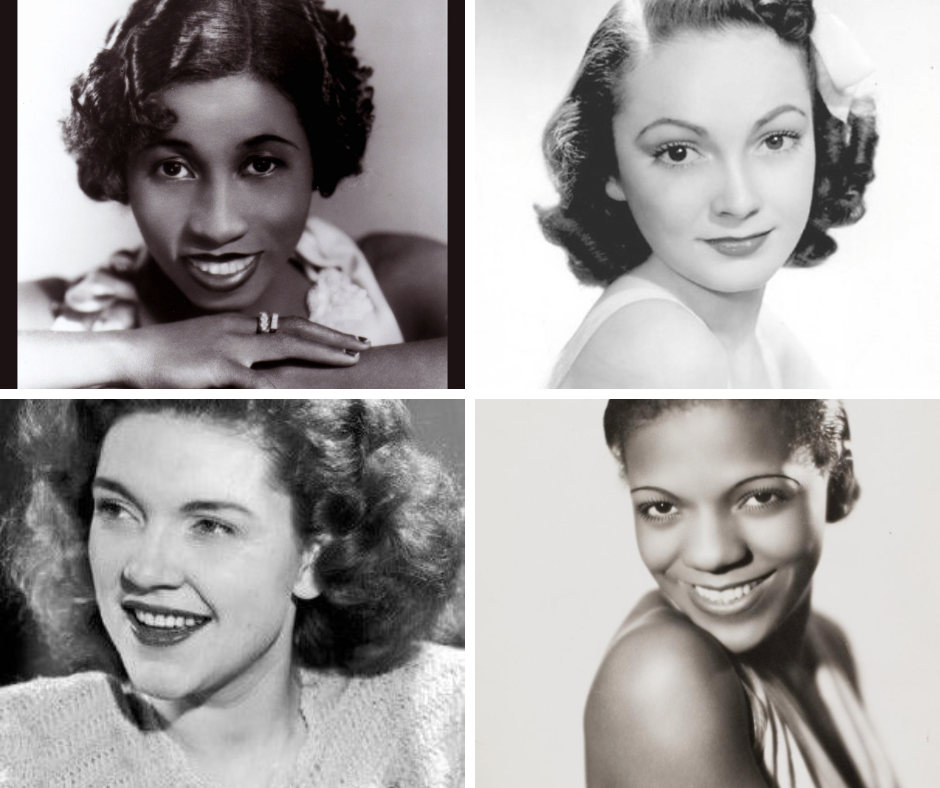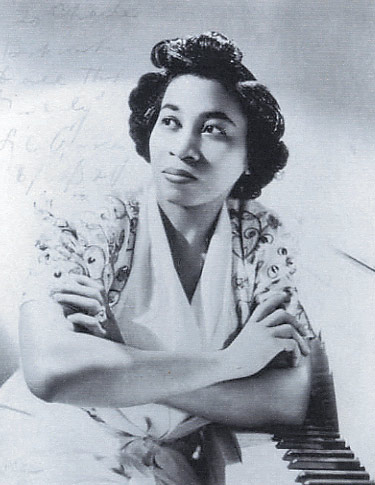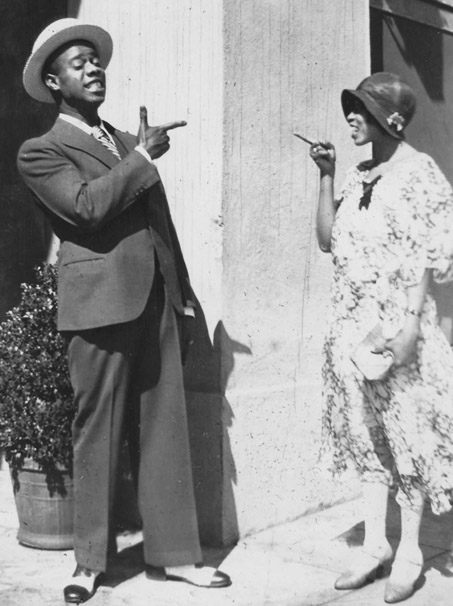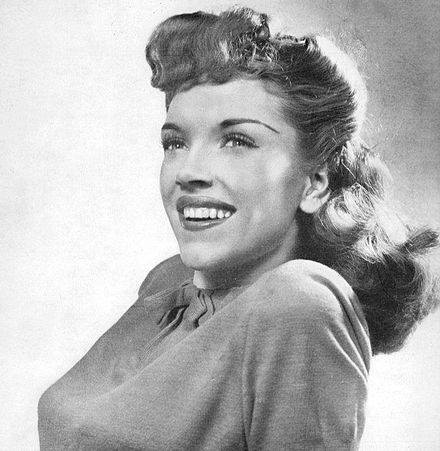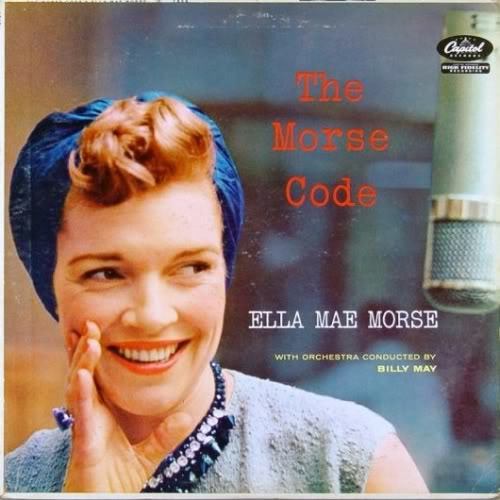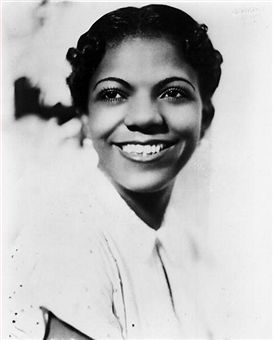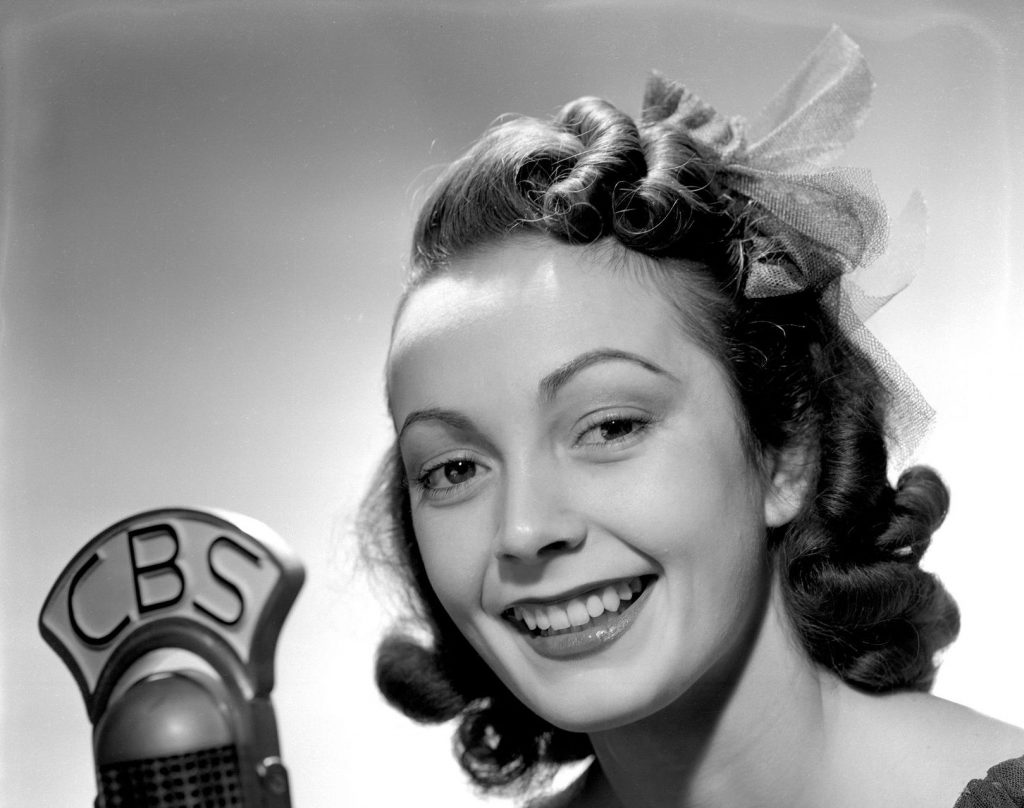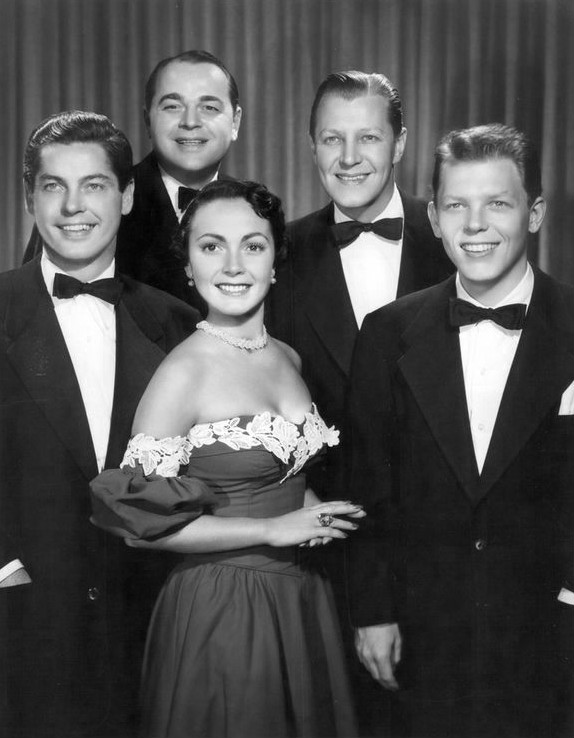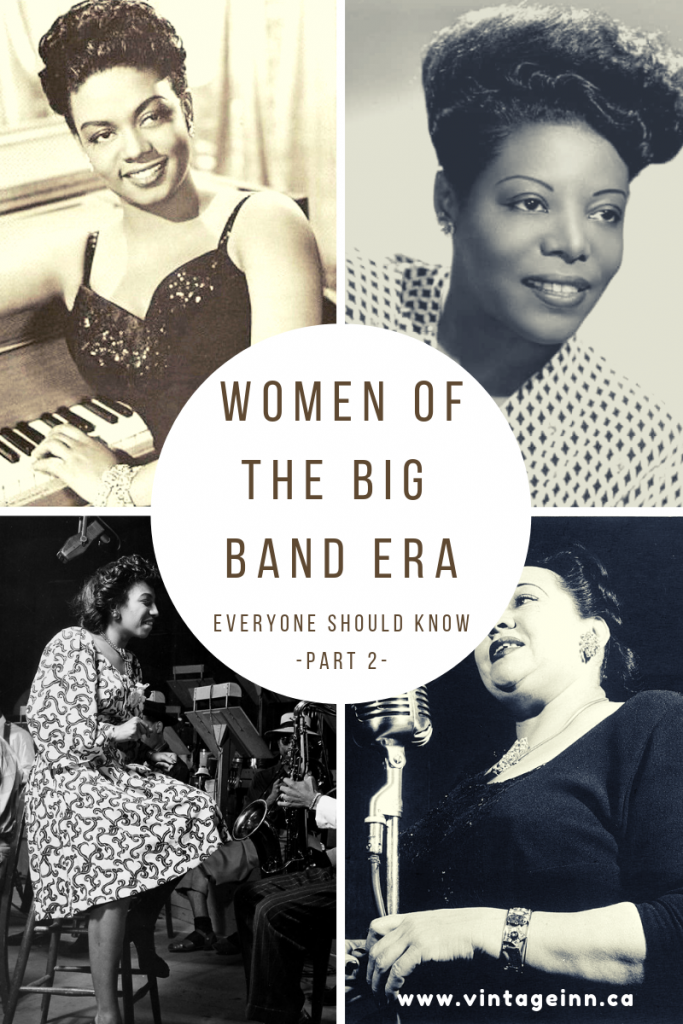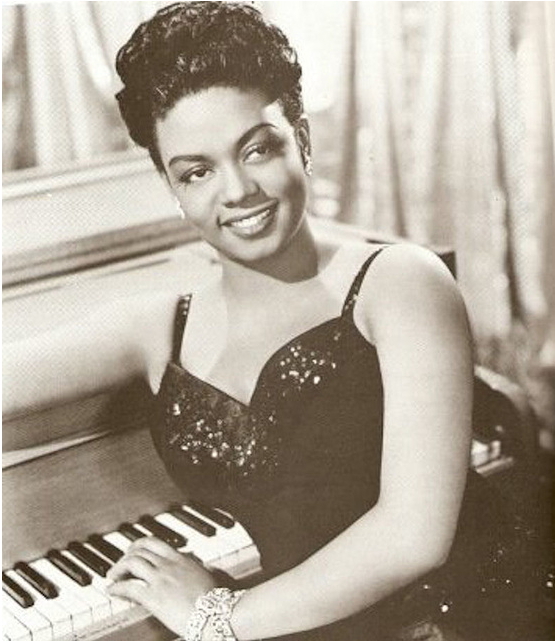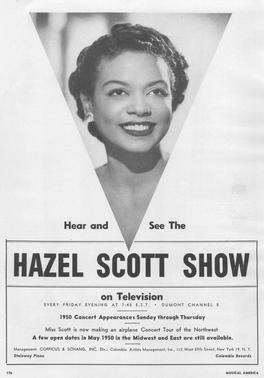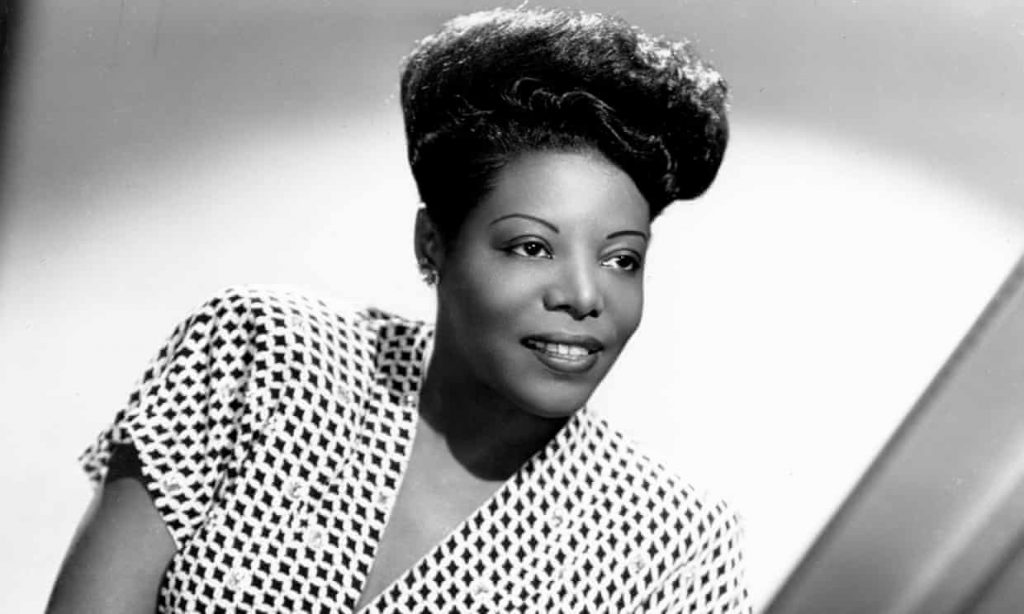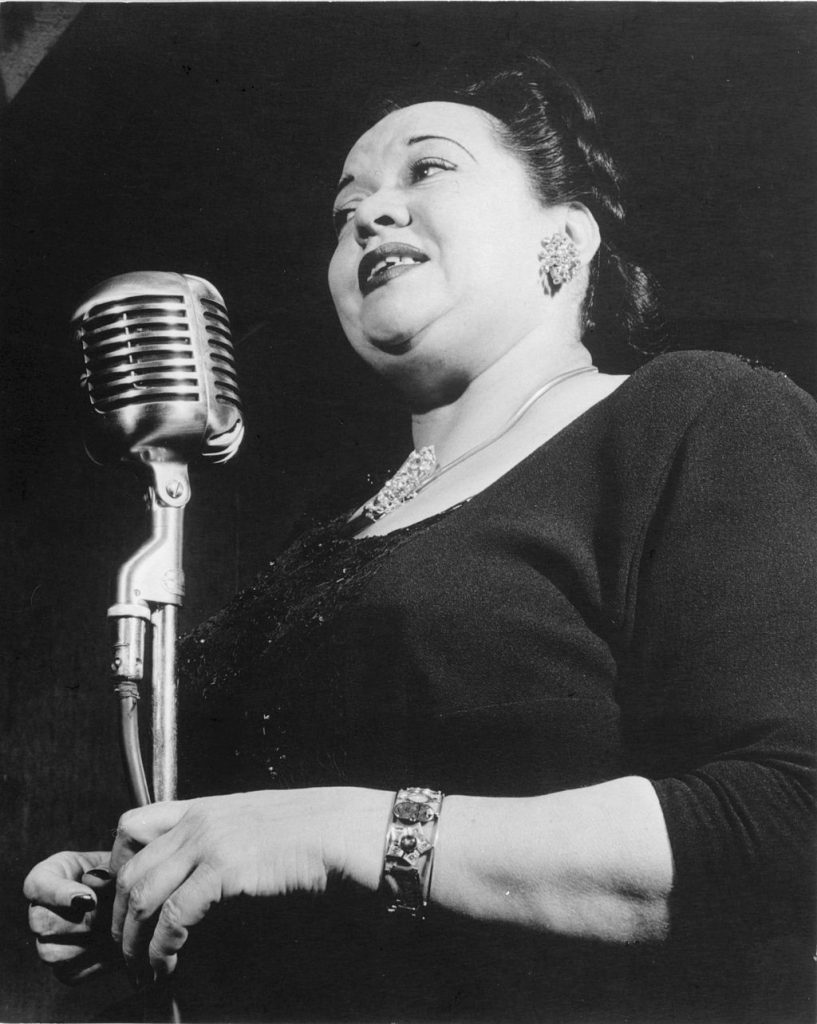I have been slowly growing my list of women from the big band era that everyone should know and sharing them on my blog for all of you to enjoy. This has been a VERY successful series and I’m excited to be able to add a few more talented women to this list.
For further reading please check out all the posts I have done on this subject on my dedicated page “Women of the Big Band Era Everyone Should Know“. (Jan 2024 update)
‘Women of the Big Band Era Everyone Should Know-Part 3″
Lil Hardin (Armstrong)
In the 1920s she was known as “Hot Miss Lil.” Today Lil Hardin (1989-1971) is noteworthy as one of the most prominent women in early jazz. A pianist, composer, arranger and bandleader, Hardin was also a guiding light for her husband—Louis Armstrong (Source).
Source: Riverwalk Jazz
I would like to start off by saying that it is going to be very hard to sum up in this short high level blog post, what Lil brought to the world of Jazz. So I have added some extra reading links for you to check out after this section. I encourage you to explore further when you have time.
Now let’s chat about Lil……(Content from Riverwalk Jazz)
Lil was born in 1898 in Memphis, TN. Though her mother worked as a maid, she gave her kids a comfortable and somewhat refined life. She made sure that Lil attended Mrs. Hicks’ School of Music and the prestigious Fisk University. Lil’s mother favored hymns and popular songs and banned Lil from having anything to do with jazz and blues when she was a teenager. Ironically, in 1918 Lil’s mother moved her family to Chicago—a center of the burgeoning jazz universe and a magnet for the best New Orleans players. Lil soon found a job at a music store where she met piano giant Jelly Roll Morton and Chicago’s top jazz bandleader King Oliver. Before long Lil made a good living as a jazz piano player in spite of her mother’s initial objection to the genre.
Louis Armstrong & Lil:
Lil and Louis were band mates in King Oliver’s Creole Jazz Band when they married in 1924. Lil Hardin saw tremendous potential in Louis Armstrong’s playing that he couldn’t see himself. Early on, she was the driving force behind his bookings and helped launch Armstrong as a star soloist. She insisted that he leave King Oliver and strike out on his own.
Lil and Louis’ marriage and musical partnership began to come apart in 1930 and they finally divorced in 1938.
During the 1930s, Hardin continued performing as a leader and soloist, and was often branded as “Mrs. Louis Armstrong.” Yet it is important to note that during this period, Black women were especially relegated to singing or dancing in a chorus line, but by this point in her life, Hardin successfully established a serious career as a respected jazz composer and artist (see note below**), long before her marriage to Armstrong. Throughout the next two decades of her life, Hardin actually wrote many hit songs for her Louis, including Struttin’ with some Barbeque, which became a Dixieland standard (source).
Lil appeared in several Broadway shows and made a series of vocal sides for Decca records. In 1959, Ray Charles recorded her hit tune “Just for a Thrill,” which also became a major hit (source).
In the late 1960s Lil backed off from the music business, and spent more and more time in a place she and Louis bought in the early years of their marriage in the lake resort town of Idlewild, Michigan.
**It should be noted….before her marriage to Louis Armstrong. Lil worked with prominent Black bands in Chicago; she performed with Sugar Johnny’s Creole Orchestra, Freddie Keppard’s Band and she led her own band at the Dreamland Café. Lil often fronted recording groups including the New Orleans Wanderers, with whom she recorded her 1926 tune “Papa Dip” —a number she named after Louis Armstrong.
Take a listen to LINDY HOP by Lil Armstrong and her Swing Orchestra 1938. As a Lindy Hopper myself this song is HOT (but way too fast for this gal Ha Ha!). (video clip)
Lil Hardin Armstrong – You Shall Reap What You Sow, 1937 (video link)
FURTHER READING:
- Please take a moment to check out a fantastic detailed post on Lil at the ‘Memphis Music Hall of Fame‘ website (it’s really great! Music clips, loads of images. Not too miss).
- Riverwalk Jazz who I have sourced for much of the above has a broadcast you can listen to, that is also a not to miss. Listen HERE.
Ella Mae Morse
Ella Mae Morse (1924-1999) was an American singer of popular music whose 1940s and 1950s recordings mixing jazz, blues, and country styles influenced the development of rock and roll (Source).
Morse was born in Mansfield, Texas. Her mother was a singer and her father, who was British, had been a dance-band drummer so music was in her genes. At the age of 14 years old in 1936 she auditioned for Jimmy Dorsey, telling him she was 19, and he hired her immediately. He fired her shortly thereafter, when the Dallas School Board told him he would be responsible for his new 14-year-old vocalist’s education. But she’d already met Dorsey’s pianist, Freddie Slack, and in 1942, after she and her mother had moved to San Diego, she re-met him, now fronting his own band. Soon afterwards, he was signed to Capitol, and he went into the studio with his new singer. A smash was born: the “Cow-Cow Boogie.” (Source)
Ella also originated the wartime hit “Milkman, Keep Those Bottles Quiet“, which was later popularized by Nancy Walker in the 1944 film ‘Broadway Rhythm’ (Source).
In 1943, her single “Get On Board, Little Chillun“, also with Slack, charted in what would soon become the R&B charts. Morse stopped recording in 1957 ( rock ‘n’ roll novelties flopped) but continued to perform and tour into the 1990s. In 1960 she received a star on the Hollywood Walk of Fame (Source).
Further Reading on Ella HERE: Ella Mae Morse: The Voice Of Capitol’s First Hits
Source: A tribute to Ella Mae Morse-Facebook
Ivie Anderson – “The Voice of Ellington”
American singer Ivie Marie Anderson (1905-1949), one of the best vocalists of jazz’s golden age, was the lead voice of jazz legend Duke Ellington’s big band for 11 years. Her strong sense of timing, distinctive jazz phrasing, and genuine emotion made her performances of blues, ballads, and novelty songs equally affecting (Source).
Born in Gilroy, California, Anderson had already enjoyed some time in the spotlight when Duke Ellington hired her in 1931. Having proven her audience appeal as a Cotton Club chorus girl, Anderson had spent a year with Earl Hines and His Orchestra in Chicago before catching Ellington’s ear and eye (Source).
Source: Jazzwax.com
Ivie introduced “It Don’t Mean a Thing” with Duke Ellington and His Orchestra in 1932. Among her many recorded hits are “I’m Satisfied” (1933), “Cotton” (1935), “Isn’t Love the Strangest Thing?” (1936), “Love Is Like a Cigarette” (1936), “There’s a Lull in My Life” (1937), “All God’s Chillun Got Rhythm” (1937), “If You Were in My Place (What Would You Do?)” (1938), “At a Dixie Road Diner” (1940), and “I Got It Bad (and That Ain’t Good)” (1941). (Source)
In 1942 she left the band to open her own Chicken Shack restaurant in Los Angeles. Her retirement from the music business was, at least in part, due to chronic asthma, a condition that brought about her early death (Source).
Here’s Duke Ellington with Ivie in I Got It Bad and That Ain’t Good soundie. Some of the girls in the soundies were actresses and dancers on stage and screen. The lady standing by the piano is dancer/actress Louise Franklin, who appeared in over 30 Hollywood films, as a dancer and actress. Other ladies in the soundie who were dancers/actresses are Artie Young and Millie Monroe, who was a stand-in for Lena Horne in Cabin In The Sky (Video link).
A clip from The Marx Brothers 1937 movie, ‘A Day at the Races’. Ivie Anderson Scat singing in ‘All God’s Chillun Got Rhythm’ (Video Link).
Paula Kelly
An excellent band and ensemble singer with a vivacious personality. Kelly (1919-1992) was a popular vocalist, excellent band and ensemble singer with a vivacious personality, finishing as tenth favorite female band vocalist in Billboard magazine’s 1941 college poll and twelfth in 1942 (source).
Paula Kelly began her professional career as part of the Kelly Sisters trio, singing on Pittsburgh radio station KDKA. They later worked with the Hal Thomas orchestra and toured for fifteen months with Major Bowes. After the sister act disbanded, Kelly joined Dick Stabile’s orchestra as a soloist on her sixteenth birthday in 1935, staying with the saxophonist until February 1938, when she left to join Al Donahue the following month. On January 5, 1939, Kelly married singer Hal Dickinson, of the Modernaires vocal group.
On April 2, 1941, she joined Glenn Miller, when she was brought in to replace Dorothy Claire.
Kelly appeared with the Glenn Miller Orchestra in their 1941 film Sun Valley Serenade and sang accompaniment with her husband’s vocal group, ‘The Modernaires’ (seen below).
Later in the year she left Miller when former vocalist Marion Hutton rejoined the band. For a while Kelly sang with Artie Shaw, and then for Bob Allen’s band. In 1942, Glenn Miller went into World War II military service and his band broke up so Paula joined the Modernaires when the group expanded to five (source).
Source: Wikipedia
The Modernaires continued with Kelly as a permanent lead singer until 1978, when she retired in favor of her daughter, who performed as Paula Kelly Jr. In the late 1970s, Kelly and The Modernaires kept swing era music alive with their performances in various venues (Source).
Paula Kelly and the Modernaires sing “By the Riverside” on the George Gobel Show, May 8, 1960 (video link).
Well friends, I hope you enjoyed learning about just SOME of the women of the Big Band Era (more stories to come!). And as mentioned at the top of the this post, make sure you take a read of all the other posts in this series.
Question Time: Who was your favorite singer (comment below)?
Thanks for stopping by!
Liz

